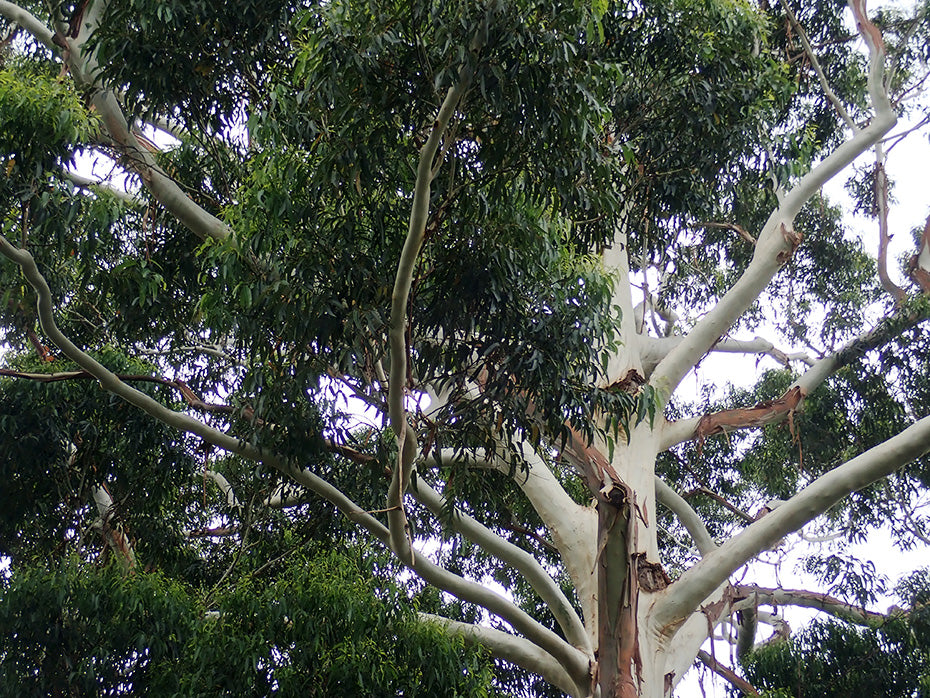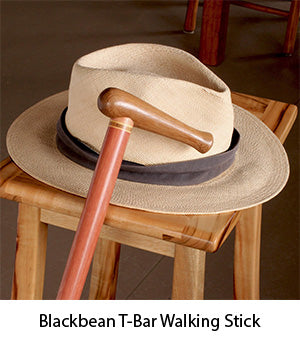The Basics of Eucalyptus Grandis (Rose Gum)

Flickr photo by Margaret Donald shared under a Creative Commons (BY-SA) license
Eucalyptus grandis, commonly known as rose gum, is a towering hardwood species native to eastern Australia. It thrives in wetter climates and has been successfully introduced to regions like South Africa, South America, and Southeast Asia. The timber is characterized by its pink-to-red coloration, straight grain, and moderately coarse texture, making it both visually appealing and mechanically strong. Its rapid growth and regenerative abilities contribute to its sustainability, supporting carbon sequestration and ecological balance. Rose gum's versatility spans various sectors, including construction, furniture, and outdoor applications, owing to its strength, durability, and resistance to moisture and decay. At Australian Woodwork, we incorporate rose gum into our handcrafted walking sticks, showcasing its durability and aesthetic charm. By choosing rose gum products, consumers support sustainable forestry practices and appreciate the unique qualities of this remarkable timber.
Origin and Distribution
Rose Gum is native to the coastal regions of eastern Australia. Thriving in wetter climates, this species has been successfully introduced to other parts of the world, including South Africa, South America, and Southeast Asia, where it has adapted well to similar environmental conditions. Eucalyptus Grandis grows rapidly, reaching impressive heights, which makes it an ideal candidate for commercial forestry.
Physical and Mechanical Properties
The timber of Rose Gum is renowned for its striking appearance and mechanical strength. Characterized by a pink-to-red colouration, it features a straight grain and a moderately coarse texture. This wood's density and hardness make it resistant to wear and tear, contributing to its longevity in construction and manufacturing. Its mechanical properties, including a high modulus of rupture and elasticity, ensure durability and resilience in various applications.
Environmental Sustainability
Eucalyptus Grandis stands out for its rapid growth rate and ability to regenerate, making it a sustainable choice in forestry practices. Its cultivation supports carbon sequestration, helping mitigate climate change impacts. Sustainable management of Rose Gum plantations ensures a balance between timber production and the preservation of natural habitats, highlighting the species' role in promoting ecological balance.
Uses and Applications
Rose Gum timber is exceptionally versatile, finding applications across various sectors. In construction, it is used for framing, flooring, and panelling due to its strength and durability. The wood's aesthetic appeal, with its rich colour and grain pattern, makes it a popular choice for furniture, cabinetry, and veneer production. Additionally, its resistance to moisture and decay extends its use to outdoor applications, including decking, fencing, and landscaping projects. At Australian Woodwork, we take pride in incorporating Rose Gum into our uniquely crafted walking sticks, utilizing its durability and visual charm as part of the shaft, exemplifying the wood's versatility and our commitment to quality.
Workability and Finishing
Rose Gum is highly regarded for its workability. Despite its density, it can be easily sawn, machined, and finished, making it a favourite among carpenters and woodworkers. The timber glues well and holds nails and screws securely, which is essential for structural applications. When it comes to finishing, Rose Gum takes stains and varnishes evenly, allowing for a wide range of aesthetic finishes that enhance its natural beauty and protect the wood in both indoor and outdoor settings.
Economic Value
The economic value of Rose Gum timber is significant. Its abundance and sustainability make it a cost-effective option for both large-scale construction projects and artisanal woodworking. Compared to other hardwoods, Rose Gum offers a competitive price point, which, coupled with its durability and aesthetic appeal, makes it an attractive choice for manufacturers and consumers alike. The timber industry benefits from the sale of Rose Gum, supporting local economies and providing employment in forestry and manufacturing sectors.
Conservation and Management
Conservation and sustainable management practices are crucial for the long-term viability of Rose Gum timber resources. Efforts include selective harvesting to ensure forest regeneration, planting and managing plantations with ecological principles in mind, and adhering to certification schemes that verify sustainable practices. These measures not only protect the biodiversity of native habitats but also secure the supply of Rose Gum timber for future generations. By prioritizing the health of ecosystems and adhering to responsible forestry practices, the industry supports environmental sustainability while meeting the demand for this valuable resource.
Conclusion
Rose Gum (Eucalyptus Grandis) timber is a remarkable natural resource that combines aesthetic appeal with mechanical strength and durability. Its versatility makes it suitable for a wide range of applications, from construction to fine furniture making. The sustainability of Rose Gum, underpinned by rapid growth and the potential for responsible management, highlights its role in an environmentally conscious timber industry. As we continue to discover and appreciate the benefits of Rose Gum, it is imperative to prioritize conservation and sustainable practices to ensure this timber remains a viable choice for future generations.









